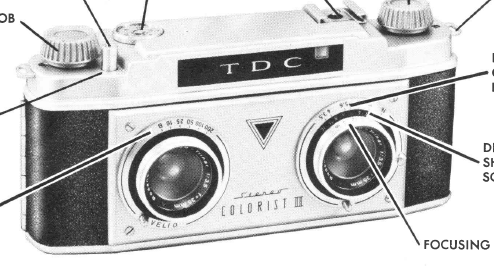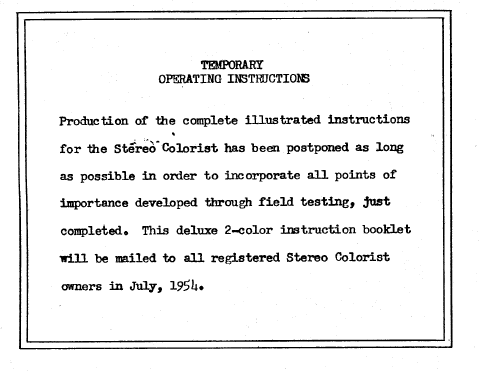
If you find this manual useful,
how about a donation of
$3 to:
M. Butkus, 29 Lake Ave.,
High Bridge, NJ 08829-1701
and send your e-mail
address
so I can thank you.
Most other places would charge
you $7.50 for
a electronic copy
or $18.00 for a hard to read Xerox copy.
This will help me to continue to host this site,
buy new manuals, and pay their shipping costs.
It'll make you feel better, won't it ?
BACK TO MAIN CAMERA MANUAL PAGE
CLICK HERE TO CONTINUE TO
Stereo Colorist
HTML MANUAL
Stereo Colorist PDF
made from HTML
page


Stereo
Colorist Temporary Instructions
